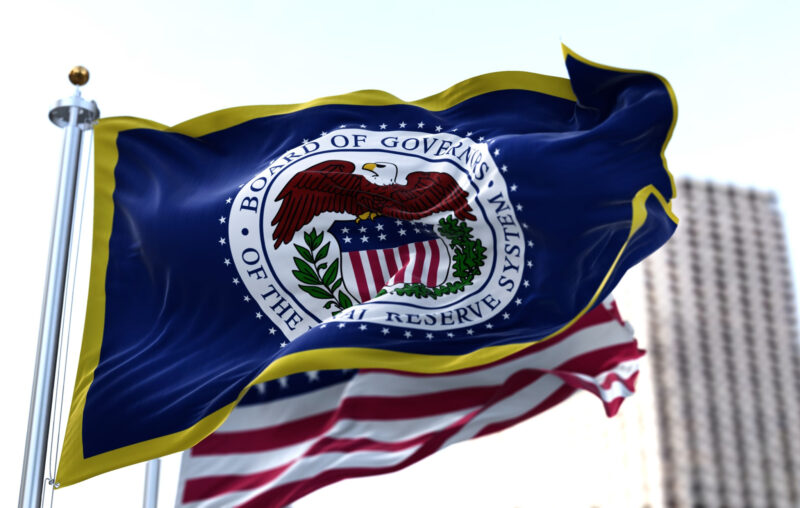Time to Tame the “Apolitical” Fed?

Writing in the Wall Street Journal, Joseph Sternberg argues that the Fed’s “decisions are inherently political and yet its democratic accountability is essentially nil.” He’s onto something. Our central bank has become increasingly partisan in recent years, and its overall competence has declined. Both in terms of democratic justifiability and macroeconomic stability, we have good reasons to be skeptical of the Fed.
Fed economists skew heavily Democrat. The overall ratio is about 10 to 1. At the Board of Governors, this is even more striking: for every Republican economist, there are nearly 50 Democrats. It goes without saying this is not anywhere close to reflective of the American public as a whole. The Fed’s leftward bias plausibly explains its unjustifiable forays into controversial policy areas that have nothing to do with monetary policy or financial regulation, such as racial equity and climate justice.
In a 2021 address, Chairman Jerome Powell specifically highlighted minority unemployment as a cause of concern for the Fed. Governor Lael Brainard was even more explicit: “by avoiding the need to tighten preemptively,” the Fed’s new monetary policy framework “could support labor market conditions that help to reduce persistent disparities,” by which she means racial unemployment gaps.
It would be concerning enough if monetary policymakers thought they could permanently affect a real (non-dollar-denominated) variable, such as employment. But their fascination with inequality, which is structural, is even more concerning. The Fed’s full-employment mandate from Congress does not entitle it to deputize itself as a social policymaker.
The Fed’s environmental activities are equally inappropriate. The Fed recently joined an international consortium of central banks and related organizations dedicated to fighting climate change. It’s pressuring some of the banks it regulates to conduct climate stress tests, forcing them to spend resources demonstrating they are not unduly exposed to environmental risk. The Fed points to its financial crisis-fighting responsibilities to justify these policies. But that is inadequate. There is simply no link between climate and the robustness of bank balance sheets.
The Fed’s self-conception as an apolitical technocracy blinds it to the degree to which it has weighed in on fundamental political issues, which instead ought to be deliberated in Congress. Even its traditional macroeconomic duties are suspect. The Fed interprets the “stable prices” portion of its mandate to mean 2 percent inflation. In 2012, it adopted a simple inflation target. In 2020, it adopted flexible average inflation targeting, which in practice means it will tolerate higher-than-2-percent inflation but not lower-than-2-percent-inflation. Even if the Fed hits its inflation target in the long run — the asymmetry in its post-2020 framework essentially guarantees that it won’t — it is not appropriate for the Fed to determine the contents of its mandate. Sternberg puts it well: “Who elected these folks to aim for a 50-percent loss in purchasing power of a dollar every 35 years?”
A 0-percent inflation target would work just as well as a 2-percent inflation target at stabilizing the economy. Both require the Fed to offset changes in money demand with changes in money supply, stabilizing aggregate demand. The problems with an inflation target (significant economic costs in the presence of supply shocks) do not depend on the numerical value of the targeted inflation rate. The difference between a 2-percent inflation target and a 0-percent inflation target is that the former creates unnecessary costs for users of money, who will spend time and effort economizing on cash balances since cash earns a negative real rate of return when inflation is positive.
Elected officials should decide what to do about racial unemployment gaps and climate change. They should also decide exactly what “stable prices” means. The Fed should not be determining these things unless explicitly instructed to do so by Congress. The politicians will inevitably make mistakes, as Sternberg recognizes. But at least they are democratically accountable. We can change policy by changing personnel every two to six years. The Fed, in contrast, is almost totally immune from the requirements of popular government. No entity should be trusted with that much power without corresponding responsibility. Time for Congress to bring the Fed to heel.









